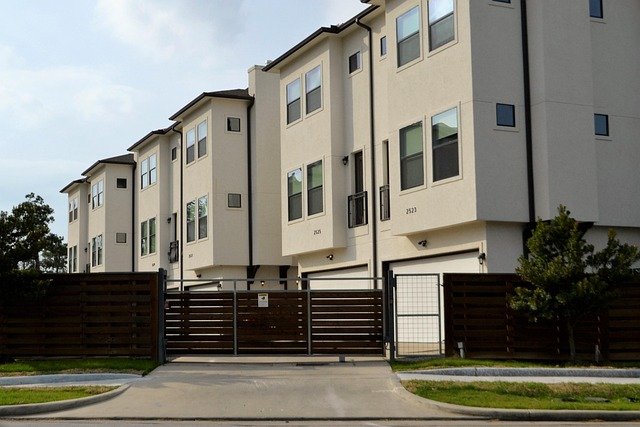Micro-Apartments: The Future of Urban Living?
In the ever-evolving landscape of real estate, a new trend is reshaping urban living: micro-apartments. These compact living spaces, typically under 400 square feet, are gaining traction in major cities worldwide. As housing costs soar and urban populations grow, micro-apartments offer a solution that balances affordability with prime locations. But what does this shift mean for residents, investors, and the future of city living?

The driving forces behind this trend are multifaceted. Urbanization continues to accelerate, with the United Nations projecting that 68% of the world’s population will live in urban areas by 2050. This influx of city dwellers, combined with skyrocketing housing costs in major urban centers, has created a perfect storm for the micro-apartment revolution.
Design Innovations in Small Spaces
One of the most fascinating aspects of the micro-apartment trend is the ingenuity in design. Architects and interior designers are pushing the boundaries of what’s possible in small spaces, creating living areas that are both functional and aesthetically pleasing.
Multi-purpose furniture is at the heart of micro-apartment design. Murphy beds that fold into walls, dining tables that transform into workspaces, and storage solutions integrated into every nook and cranny are common features. Some micro-apartments even boast modular walls that can be moved to create different living configurations throughout the day.
Technology also plays a crucial role in maximizing space efficiency. Smart home systems can control lighting, temperature, and even furniture arrangements with the touch of a button. These innovations not only make micro-living more comfortable but also more sustainable, as smaller spaces require less energy to heat and cool.
The Financial Perspective
From an investment standpoint, micro-apartments present an intriguing opportunity. In prime urban locations, where land is scarce and expensive, developers can maximize their return on investment by creating more units in a given space. This density can translate to higher overall rental income compared to traditional apartment buildings.
For renters, micro-apartments offer access to desirable neighborhoods at a fraction of the cost of larger units. In cities like New York or San Francisco, where average rents for one-bedroom apartments can exceed $3,000 per month, micro-units often rent for 20-30% less. This affordability factor is particularly appealing to young professionals and students who prioritize location over space.
However, the micro-apartment market is not without its challenges. Zoning laws in many cities are still catching up to this trend, with minimum square footage requirements sometimes posing obstacles to development. Additionally, financing for micro-apartment projects can be more complex, as some lenders are still hesitant about this relatively new property type.
Social and Psychological Implications
The rise of micro-apartments raises important questions about the social and psychological effects of living in such small spaces. Critics argue that these tiny dwellings could lead to feelings of claustrophobia and isolation, potentially impacting mental health.
However, proponents of micro-living point to the communal aspects often incorporated into these developments. Many micro-apartment buildings feature extensive shared spaces, from rooftop gardens to co-working areas, encouraging interaction among residents. This community-focused approach can help combat the isolation that might otherwise occur in small living quarters.
Moreover, the minimalist lifestyle necessitated by micro-living aligns with growing trends towards decluttering and reducing material possessions. For many, particularly younger generations, the trade-off of less personal space for more urban amenities and experiences is a welcome one.
Impact on Urban Planning and Development
The proliferation of micro-apartments is having a significant impact on urban planning and development strategies. City planners are reassessing zoning laws and building codes to accommodate these smaller units while ensuring safety and livability standards are met.
Some cities are embracing micro-apartments as a solution to housing shortages and affordability crises. For example, Seattle has relaxed minimum size requirements for apartments in certain zones, paving the way for micro-unit developments. In contrast, other municipalities remain cautious, concerned about the long-term implications of such high-density living.
The trend is also influencing the broader real estate market. As more people opt for micro-living, there’s potential for a shift in demand away from larger suburban homes, particularly among younger demographics. This could have far-reaching effects on property values and development patterns in both urban and suburban areas.
The Future of Micro-Apartments
As we look to the future, the micro-apartment trend shows no signs of slowing down. In fact, it’s likely to evolve and expand in response to changing urban dynamics and technological advancements.
One potential direction is the integration of co-living concepts with micro-apartments, creating hybrid spaces that offer private micro-units within larger communal living environments. This could further enhance the social aspects of micro-living while maintaining the efficiency and affordability that make it attractive.
Another avenue for growth is the adaptation of micro-apartment concepts to different demographics. While currently popular among young singles and couples, there’s potential for micro-units designed for families or seniors, expanding the market for these compact living spaces.
The COVID-19 pandemic has also influenced the micro-apartment landscape, highlighting the importance of flexible living spaces that can accommodate work-from-home setups. Future micro-apartment designs are likely to incorporate more adaptable features to meet these evolving needs.
In conclusion, micro-apartments represent a significant shift in urban living paradigms. As cities continue to grow and evolve, these compact dwellings offer a solution that balances affordability, location, and sustainability. While challenges remain, the innovative approaches to design, community-building, and urban planning sparked by the micro-apartment trend are likely to have lasting impacts on the real estate industry and city life as a whole. For investors, developers, and urban dwellers alike, micro-apartments present an opportunity to reimagine what it means to live in the heart of the city.





